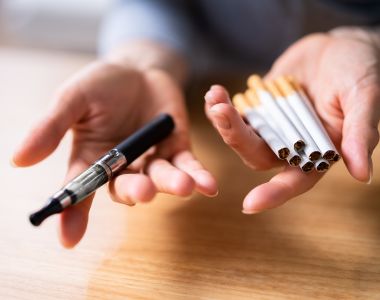Lesbian, gay, bisexual and transgender young adults have elevated rates of multiple nicotine and tobacco product use (i.e., use of combustible cigarettes and nicotine vapes) than their non-LGBTQ peers. They are also less likely to perceive nicotine and tobacco products as harmful. This is concerning, as low risk perceptions are prospectively associated with susceptibility to and use of nicotine and tobacco products.
The Food and Drug Administration Center for Tobacco Products is mandated to educate the public about tobacco product risks, yet limited evidence describes how to effectively frame tobacco risk communications for young adults who may use multiple nicotine and tobacco products. It is also not clear whether LGBTQ and non-LGBTQ young adults respond to tobacco risk communications similarly, though understanding these nuances is important for developing inclusive mass-media anti-tobacco campaigns.
At the next Prevention Research Center for Healthy Neighborhoods seminar, Joanne G. Patterson, assistant professor at The Ohio State University College of Public Health, will discuss her research on the topic. The talk will be held Wednesday, June 14, from noon to 1 p.m. via Zoom.
Patterson’s team applied a mixed-methods, formative evaluation to develop and test absolute and comparative risk messages intended to reduce smoking and vaping intentions and increase quitting intentions among young adults susceptible to multiple nicotine and tobacco product use.
Patterson’s talk, titled “Developing Risk Communications to Address Smoking and Vaping among Young Adults of Diverse Genders and Sexual Orientations,” will focus on the message design process, preliminary findings of the message effects experiment, and next steps.

